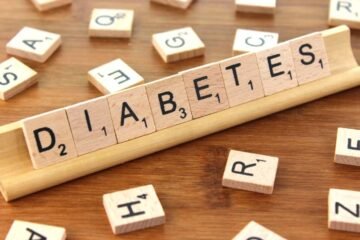What is the average person eating? More and more, people are talking about their waistlines and how they can reduce them by changing what they eat and exercise. A growing trend in dieting is counting calories to be aware of how many you eat and try to consume fewer overall.
Luckily for us, there are some pretty easy ways to determine the nutritional value of foods! This article will go into detail on one of the most popular low calorie diets – keto. It also will compare the nutritional content of an individual serving size of cinnamon toast crunch with that of just the bread alone!
Keto diets have been getting a lot of attention since it was first introduced over a decade ago. Since then, it has become one of the top weight loss strategies. Why is it such a powerful tool in weight loss? That will be discussed at length below.
Calculate how many calories you should eat in a day
In order to know how many calories you need for daily nutrition, there are two important factors that determine this.
First, what your active lifestyle is like depends on whether you work full time or part time, if you have children or don’t, etc. Second, how much you weigh also makes a difference!
If you want to lose weight, then you should be trying to consume less than 2,000 calories per day. That’s about 500 fewer calories per week, or 15 percent fewer calories every seven days!
By keeping these guidelines as a starting point, you can figure out your individual calorie needs by subtracting activity levels and weights from 2,000.
Calculate how many calories you should eat at a meal

When eating foods, one important factor in determining how much food you need to feel full is calculating how many total calories you consume. This includes both nutritional calories as well as the calorie content of the serving size!
Many diet plans will tell you that it’s best to try to keep yourself between 1500-2000 calories per day. That’s about 8 hours for someone our average height (5ft 7in).
However, what most people don’t realize when trying to hit that daily target is that they shouldn’t be averaging that number every single day, only once a week or even less frequently than that.
Instead, aim to reach your caloric goal by simply eating enough each day to meet that quota, with small overages allowed. Your body doesn’t require lots of excess calories to function properly, especially in its early stages of development.
History of calories
When we talk about how many calories something has, you should know that there is no standard definition. One thing to note is that most definitions of “calorie” are from before our modern understanding of nutrition.
A calorie was first defined in 1909 as the amount of energy needed to raise one kilogram (2 pounds) of water by 1°C (1⁰F). This definition made sense back then because scientists thought that all foods contained this type of energy, which is not true anymore!
Since then, the average person needs slightly more than 2,000 calories per day to maintain their weight. About 1,500 of these calories come from food and the rest comes from body processes like breathing, sleeping, and keeping your heart beating.
By the mid-20th century, people began referring to just half of those 1,500 calories as “active calories.” These include eating meals and doing things like moving around or thinking thoughts. The other 500 were considered inactive calories, or too much fuel being used for routine activities.
Active calories have become less important as researchers find evidence that overall activity keeps us lean and healthy. If you want to lose weight, active calories can be limited (think walking on a treadmill), but having enough inactive calories for daily life seems to be the main factor.
History of nutrition

Before we dive into how many calories are in a bowl of cinnamon toast crunch, it is important to know some history about nutritional information. The basics of what foods have nutrients and why they matter were not always there!
Nutrition was once thought to be an isolated field that only professionals needed to care about. If you’ve ever seen a commercial for “diabetes diets,” they’ll tell you that most people don’t need much more than fruits and vegetables to live a healthy life.
This idea shifted over time, however, as researchers gathered more and more data. Early scientists like Benjamin Martell, M.D., considered nutrition to be an integral part of healthcare. He even made changes to his diet due to this understanding!
As science progressed, experts began to understand better what different food components do. Certain vitamins and minerals help promote health by acting on certain hormones or keeping your blood glucose levels within a normal range.
Calorie intake also matters. At one time, people did not realize that excess calorie consumption could lead to obesity. It is our body’s natural tendency to seek out energy so that it can function properly, but eating too much can cause us to store all of those extra calories as fat!
Obesity can increase your risk of getting sick in several ways. For example, overweight individuals are at a higher risk of diabetes because their bodies do not regulate blood sugar well.
Recognize the difference between nutrition and calories
Nutrition is an important factor in weight loss, but you must be careful not to underestimate how many calories you consume when thinking about nutritional aids to lose weight.
Calories are essential to your health because they feed your body! Eating too few calories can cause malnutrition, which affects every system in your body including your skin, muscles, nerves, blood, and immune system. This may impair your overall health and lead to death.
By having enough food energy, your body can function normally and work efficiently. You should never feel hungry while eating, but rather full of nutrients and energy. Consuming more than 2,500-2,800 kcal per day is recommended for most people.
However, individual calorie needs vary depending on several factors such as gender, activity level, and muscle mass. A healthy person who is active and exercises at least 30 minutes daily can eat up to 4,000 calories without experiencing dieting. 3,600 – 4000 is even advised as an intake range for people that are very active.
There are two main reasons why it’s important to know what the average number of calories in the foods you eat. The first is so you can determine whether your current diet contains enough food or if you need to make changes.
The second is so you don’t over or under estimate how much food you need to achieve your goals.
Calculate how many calories are in different foods

Finding the nutritional value of an individual food item is very possible, but it does require some time and effort. There are several websites that can do this for you!
Some sites will also compare one product to another, so you could find out what has more nutrients than something else. Nutrient-rich alternatives or supplements may be better options for you if you are looking to improve your health.
You can usually look up a ingredient’s name in a dictionary as well as its chemical formula. From there, you can search Google or other sites for nutrient information.
There are even apps such as Nutrition Calculator which make finding nutritional info much easier. You just have to input the ingredients and it calculates everything for you. Some of these tools identify whether or not certain additives like salt or sugar are too high in nutrition cost.
Conduct calorie counting
It is important to know how many calories you eat per serving-size portions, as well as for the whole day. This helps you keep track of what foods make up your daily diet and can help you find lower calorie alternatives or better ways to prepare them.
Many people start their day by having a bowl of cereal like Kellogg’s® cinnamon toast crunch (CTC). A typical one cup serving size has two tablespoons milk, two tablespoons butter, three cups oats and two packets of sugar. That is eight hundred ninety five cals!
Most of us add water and mix in some vanilla extract, but never measure out any other ingredients. You would be surprised how much cream and syrup adds to the total weight.
By including lower fat liquid toppings such as milk, salt, and water, you are likely reducing the overall nutritional value of your breakfast. It is also difficult to determine the exact amount of CTC that you are eating due to no measuring bowls being used.
Never underestimate the power of sugar! The average person needs about twenty percent of their daily intake from carbohydrates, which is usually given as 2–3 units of carbs per pound of body weight. One cup of CTC contains almost four units of carbage!
This could easily skew the numbers when calculating your BMI and overall health. By only looking at the number on the label, you may not be telling the full story of just how many carbs this food contains.
Tips for calorie counting
Just because something is considered a food source does not mean that you can eat it in unlimited amounts. That would be like saying you are allowed to eat as many slices of bread as there are pieces of toast!
Bowls of cinnamon roll mix like cereals usually have around 250 calories per one-tablespoon serving. Some may even be lower, depending on what kind they have chosen.
If you love cinnamon rolls, then try having just one half-bunch every other day or once a week instead of everyday to see how much energy you get from them.
You should also know that most people are hungry an hour after eating breakfast, so if you start to feel tired or hungry later than usual, choose healthier options for your next meal to help balance out your nutrition.


















